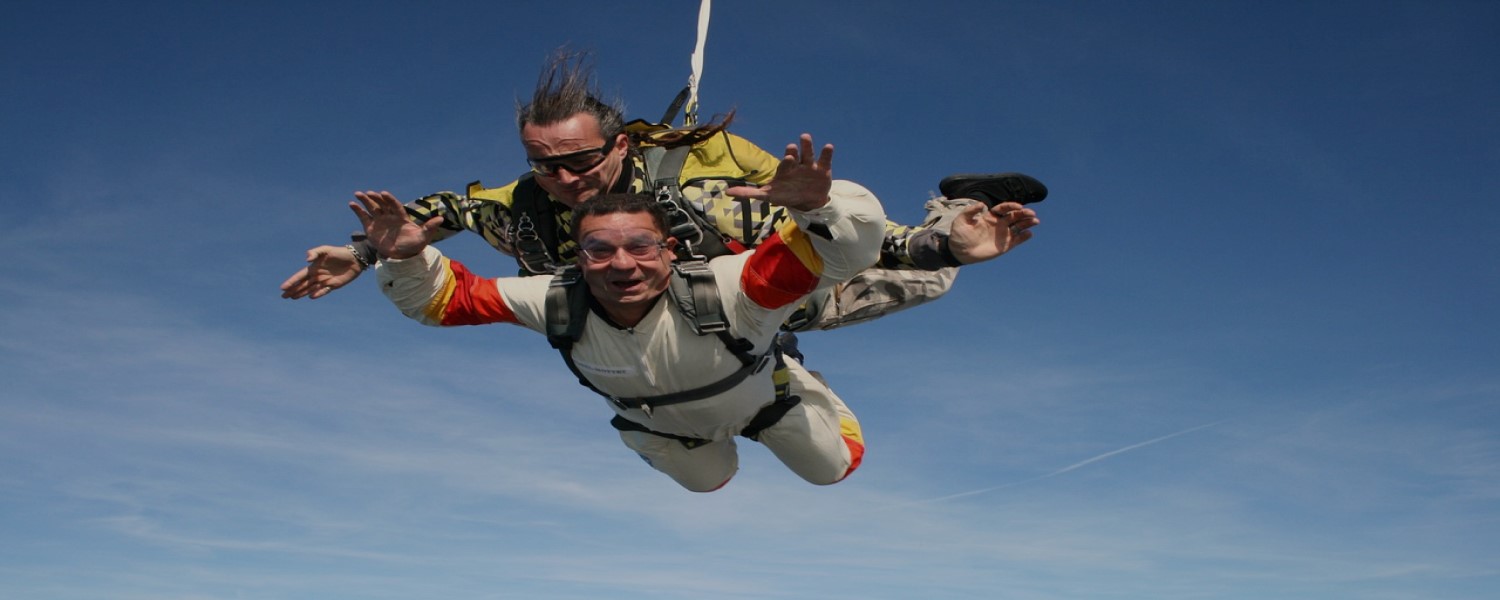This is Why It’s Important to Get Comfortable Being Uncomfortable!
Who knew that the feeling of being uncomfortable could be turned into a business?
Until recently, I would have not believed it, that is until a few weeks ago when I stumbled across a YouTube channel called “Yes Theory” which it turns out is a business based on, yes you guessed it, being uncomfortable.
Let me back up a bit so you know what the hell I am talking about. Several years ago, four students at McGill University in Montreal took a class that taught students to embrace being uncomfortable and say yes to new life experiences. That class inspired a YouTube channel called Project 30, which has since been changed to Yes Theory by the four founders – Matt, Ammar, Thomas, and Derin.
“Yes Theory” is a YouTube channel/entertainment company that features videos of the foursome traveling the world in search of new experiences.
Oh, and the videos also feature some type of challenge that revolves around being uncomfortable such as asking billionaires in Beverly Hills if they can swim in their pools, or getting strangers to tell other strangers “I love you”.
The team also got one of Hollywood’s biggest movie stars to embrace being uncomfortable and say yes to one of their challenges…more on that in a bit.
The Importance of Being Uncomfortable
Being uncomfortable is inevitable in our lives, no matter what we do we cannot escape it.
As much as it sucks sometimes, there is a big silver lining according to Dr. Aziz Gazipura, author of Not Nice: Stop People Pleasing, Staying Silent, & Feeling Guilty… And Start Speaking up, Saying No, Asking Boldly, and Unapologetically Being Yourself, which is that:
“As you build your capacity to tolerate discomfort, more and more possibilities will open up in your life.” 1
Just think about how many of the actions we take in our day-to-day lives can require us being uncomfortable, at least initially. For example: having to say no to people, asking explicitly for what we want, speaking up for ourselves, and being assertive – just to name a few.
Almost all of them will make us uncomfortable when we first start doing them. And some of them will still make us a little uncomfortable after doing them for years.
But, if we keep doing them anyway, many of them should get easier and they will definitely enhance our lives.
The bottom line is this, being uncomfortable is something we need to embrace as it helps us grow.

Comfort is Overrated!
In her 2017 TED Talk titled Get Comfortable with Being Uncomfortable, Luvvie Ajayi told a great story about how her skydiving experience was a great analogy for being uncomfortable with speaking the truth:
“But the very anti-me thing that I did that year that scared the crap out of me — I went skydiving. We’re about to fall out of the plane. I was like, “I’ve done some stupid things in life. This is one of them.”
And then we come falling down to Earth, and I literally lose my breath as I see Earth, and I was like, “I just fell out of a perfectly good plane on purpose.”
“What is wrong with me?!” But then I looked down at the beauty, and I was like, “This is the best thing I could have done. This was an amazing decision.” And I think about the times when I have to speak the truth. It feels like I am falling out of that plane. It feels like that moment when I’m at the edge of the plane, and I’m like, “You shouldn’t do this,” but then I do it anyway because I realize I have to.
Sitting at the edge of that plane and kind of staying on that plane is a comfort to me. And I feel like every day that I’m speaking truth against institutions and people who are bigger than me and just forces that are more powerful than me, I feel like I’m falling out of that plane. But I realize comfort is overrated. Because being quiet is comfortable. Keeping things the way they’ve been is comfortable. And all comfort has done is maintain the status quo. So we’ve got to get comfortable with being uncomfortable by speaking these hard truths when they’re necessary.” 2
Let’s now look at some actionable things we can do to increase our capacity to tolerate discomfort.
4 Ways to Build Our Capacity for Being Uncomfortable
(1) Choose It
If we always choose the comfortable path in life, we face the risk of becoming stagnant, stuck and bored with our lives. This means that we will end up feeling discomfort anyway in the form of living a fearful, low-energy, boring and uneventful life.
However, as Gazipura says we can avoid these types of discomforts by choosing other discomforts:
“You can experience the discomfort of taking healthy risks, moving towards what you want, being authentic, and taking life on. That brings a whole new set of discomforts with it – fear, doubt, guilt, uncertainty. But unlike the first kind, these discomforts are like working out: uncomfortable in the short term but liberating in the long term. When you voluntarily confront discomfort, you become stronger, more resilient, more powerful.” 1
The point is to take action despite the fear or uncomfortable feelings you may have.
For example, let’s say public speaking makes you uncomfortable. When you first start you will no doubt be uncomfortable, but the more you do it, the less uncomfortable you will be. The idea is to keep doing it over and over until finally you are relaxed doing it.
(2) Relish the Discomfort
Seeing as how we are all going to experience discomfort in our lives, we may as well enjoy it. As crazy as that sounds, Gazipura shows how it’s possible by comparing it to lifting weights or working out:
“When you’re in that moment of pushing through a challenging set or hitting a wall on the fifth mile of your run, you have two choices. You can start fighting it: Ugh! This is too hard. It’s too hot out. I can’t do this. I hate this exercise. When am I going to be done?
Or…
You can lean into it. You push harder and feel the burn because you know that leaning into the edge of your capacity will make you grow…And you move toward the discomfort because you know it’ making you stronger.” 1
The idea is to approach emotional discomforts such as awkwardness, embarrassment, fear and other things you may be scared of in a similar fashion.
How can you do this? I’m glad you asked, by doing comfort challenges.
(3) Do Comfort Challenges
Another thing that you can do to get comfortable with being uncomfortable is by partaking in what is called comfort challenges. The idea is to do these exercises to make yourself uncomfortable on purpose. You may have heard this popular quote by Chicken Soup for the Soul author Jack Canfield: “Everything you want is on the other side of fear.” Well, comfort challenges are actions we can take to get to the other side of fear.
Here are a couple of popular comfort challenges that others have done that you may want to try:
(i) Laying down
The first one simply has you go somewhere like Starbucks and lie down on the floor for 10 seconds without saying anything to anyone. If someone asks if you are ok, say “Yes, I’m fine.” Obviously use common sense with this one and don’t lie down in the street or somewhere where people will trip over you. The idea is to do it in a place where you can be exposed to embarrassment and shame.
(ii) The coffee shop challenge
The second one has you walk into a coffee shop and ask for a 10% discount on whatever it is you are buying or ordering. The idea here is not to tell them you are doing an exercise but to do it, bite your lip, and suck it up. The point is being uncomfortable and risking rejection.
It should be obvious, but I will say it anyway – do not do something where you put yourself in a dangerous situation. The idea is to do something that makes you uncomfortable, not to do something stupid that puts you in harm’s way.
(4) Use Fear-Setting
Lastly, in a previous post, we discussed a concept called fear-setting that author Tim Ferriss discusses in his NY Times bestseller, The 4 Hour Work-Week.
Ferriss recommends asking 3 questions of ourselves to help us overcome our fears of doing something:
(1) Define the nightmare scenario or the worst thing that could happen if you did what you are thinking of doing. List all the doubts, fears, and what-ifs in painstaking detail. What would be the permanent impact on a scale of 1-10? How likely is it to happen?
(2) What could you do to repair the damage or get things back on the upswing if it happened? What could you do to get things back under control?
(3) List out the outcomes or benefits, both temporary and permanent of scenarios that are more likely to happen? What are the more probable, positive outcomes? What would their impact be on a scale of 1-10?
An Epic Comfort Challenge
In February of 2018, the “Yes Theory” team offered one of Hollywood’s biggest stars the following challenge:
“Will Smith…We challenge you to HELI BUNGEE JUMP! You’ve been a positive and motivational role model for the past few decades and have inspired millions, including us, to work hard and face our fears head-on. So as a token of our gratitude, we wanted to get you to face something that might scare you and take you Heli Bungee Jumping with us! We have one of the best pilots in the U.S. on board and would love nothing more than to share such an amazing experience with you.” 2
Smith accepted the challenge to bungee jump over the Grand Canyon and did it! Another cool aspect of the challenge was that it was done to create awareness for his foundation’s “Education Cannot Wait Program” whose mission is to provide access to education to 75 million kids in crisis-affected areas.
I will end this blog post with a question…
“What new experience am I going to say “yes” to today by being uncomfortable in my life?”
On that note, it is time for me to get uncomfortable by having an ice-cold shower!
Until next time, keep being uncomfortable, keep saying “yes” to new experiences and as always…PYMFP!
–Rick
P.S. Wanna know more? Check out the entire book.

Use it or Lose It – Being Uncomfortable
4 ways to build our capacity for being uncomfortable that we discussed above are:
(1) Choose it.
(2) Relish the discomfort.
(3) Do comfort challenges.
(4) Use fear-setting.
When to Use It
It is good to practice being uncomfortable by doing something that makes you uncomfortable every day.
What Do You Think?
Is being uncomfortable something you need to work on in your life? Will you use any of the techniques for being uncomfortable that we discussed above? Please share your thoughts in the comments below!
If you enjoyed this post, it would mean the world to us if you shared it with people you care about via any of the social media platforms below!
Popular Previous Posts:
Being Unhappy: How to Overcome Obstacles to Happiness
This is How to Fall Back Asleep – 8 Things to Try
Avoiding Distractions: How to Do It Based on Neuroscience
This is How to Interrupt Others and Still Have Them Love You!
References
2 Get Comfortable with Being Uncomfortable TED Talk – https://www.ted.com/talks/luvvie_ajayi_get_comfortable_with_being_uncomfortable/transcript?language=en
